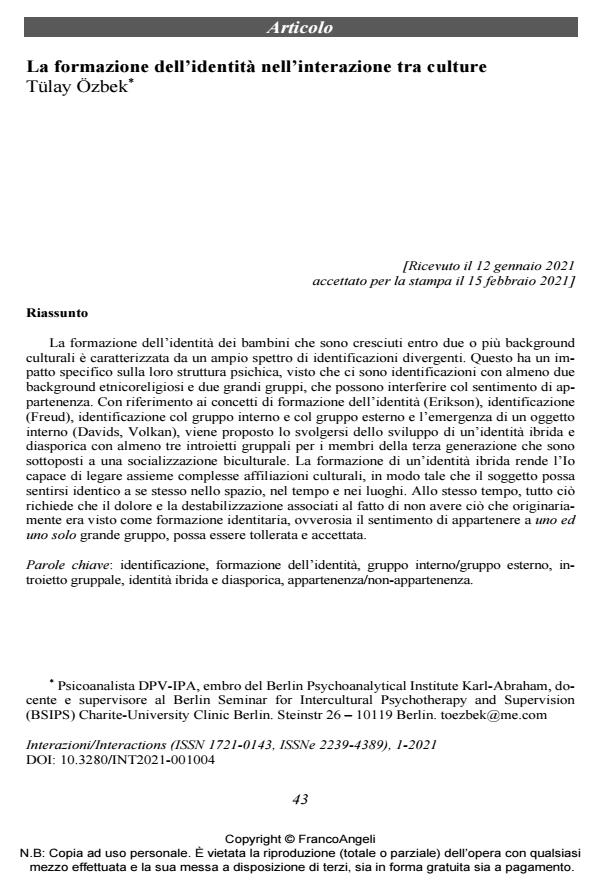La formazione dell’identità nell’interazione tra culture
Titolo Rivista INTERAZIONI
Autori/Curatori Tülay Özbek
Anno di pubblicazione 2021 Fascicolo 2021/1
Lingua Italiano Numero pagine 16 P. 43-58 Dimensione file 197 KB
DOI 10.3280/INT2021-001004
Il DOI è il codice a barre della proprietà intellettuale: per saperne di più
clicca qui
Qui sotto puoi vedere in anteprima la prima pagina di questo articolo.
Se questo articolo ti interessa, lo puoi acquistare (e scaricare in formato pdf) seguendo le facili indicazioni per acquistare il download credit. Acquista Download Credits per scaricare questo Articolo in formato PDF

FrancoAngeli è membro della Publishers International Linking Association, Inc (PILA)associazione indipendente e non profit per facilitare (attraverso i servizi tecnologici implementati da CrossRef.org) l’accesso degli studiosi ai contenuti digitali nelle pubblicazioni professionali e scientifiche
La formazione dell’identità dei bambini che sono cresciuti entro due o più background cul-turali è caratterizzata da un ampio spettro di identificazioni divergenti. Questo ha un impatto specifico sulla loro struttura psichica, visto che ci sono identificazioni con almeno due back-ground etnicoreligiosi e due grandi gruppi, che possono interferire col sentimento di apparte-nenza. Con riferimento ai concetti di formazione dell’identità (Erikson), identificazione (Freud), identificazione col gruppo interno e col gruppo esterno e l’emergenza di un oggetto interno (Davids, Volkan), viene proposto lo svolgersi dello sviluppo di un’identità ibrida e diasporica con almeno tre introietti gruppali per i membri della terza generazione che sono sot-toposti a una socializzazione biculturale. La formazione di un’identità ibrida rende l’Io capace di legare assieme complesse affiliazioni culturali, in modo tale che il soggetto possa sentirsi identico a se stesso nello spazio, nel tempo e nei luoghi. Allo stesso tempo, tutto ciò richiede che il dolore e la destabilizzazione associati al fatto di non avere ciò che originariamente era visto come formazione identitaria, ovverosia il sentimento di appartenere a uno ed uno solo grande gruppo, possa essere tollerata e accettata.
Parole chiave:Identificazione, formazione dell’identità, gruppo interno/gruppo esterno, in-troietto gruppale, identità ibrida e diasporica, appartenenza/non-appartenenza.
Tülay Özbek, La formazione dell’identità nell’interazione tra culture in "INTERAZIONI" 1/2021, pp 43-58, DOI: 10.3280/INT2021-001004